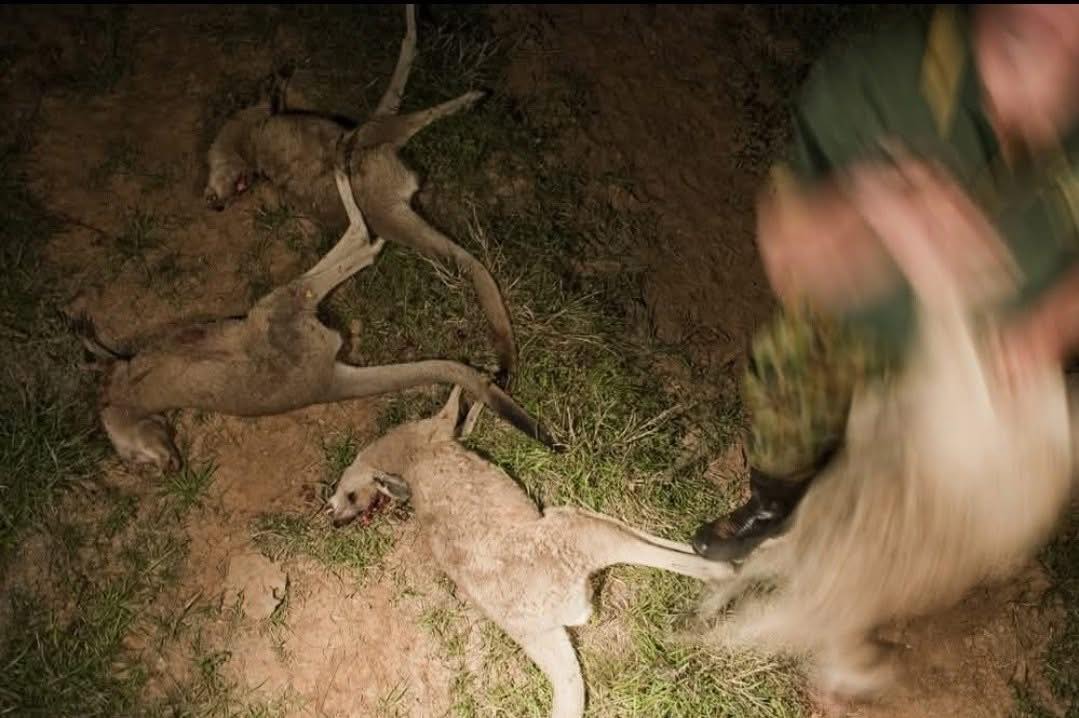South Australia’s $900,000 Kangaroo Harvesting Program: A Scientific Integrity Crisis
The South Australian Government’s announcement of a $900,000 kangaroo harvesting incentive program in June 2025 has sparked serious concerns about the abandonment of evidence-based wildlife management in favour of short-term commercial and pastoralist interests. Analysis of nine major harvest subregions reveals that maximum incentives are being offered for areas with vulnerable populations, justified by population modelling that often defies biological reality.
The Program: Maximum Incentives for Minimum Populations
The incentive program offers substantial rewards to harvesters:
- Up to $200 daily payments for meeting minimum quotas
- $5 per commercially harvested kangaroo
- $7 per non-commercially shot kangaroo
- $5,000 grants for equipment and operating costs
Most concerning is that the subregions receiving maximum incentives ($200 daily) are precisely those with the most vulnerable populations – many operating well below scientific sustainability thresholds.
Case Study: Marree (Outside Dog Fence) – A Policy Contradiction
The Marree subregion exemplifies the program’s flawed approach:
Population Reality:
- Density: 0.30 kangaroos per km²
- Status: Well below the 2/km² extinction threshold
- Harvest history: Only 170 kangaroos over the past decade
- Current harvest: Suspended since 2021 due to low density
Government Response: Despite these clear indicators of population vulnerability, this subregion receives maximum incentives of $200 daily plus per-animal payments.
The policy represents a fundamental contradiction – simultaneously suspending harvest due to low populations while offering financial incentives to increase pressure on the same vulnerable animals.
The Modelling Problem: When Mathematics Replaces Biology
Perhaps most troubling is the reliance on population models that generate biologically impossible scenarios:
Marla Oodnadatta Subregion
- 2021 population: 38,422 kangaroos
- 2022 modelled population: 169,383 kangaroos
- Claimed increase: 341% in one year
This dramatic increase occurred without field verification and enabled the subregion’s reopening for commercial harvest after a two-year suspension. The same population estimate has been used for three consecutive years without field surveys – suggesting administrative convenience rather than biological monitoring.
Eyre East Subregion
Even more extreme modelling failures appear in the Eyre East subregion:
- 662% population increase during drought conditions (2020-2022)
- 72% population crash with no environmental trigger
- 403% increase when kangaroo populations typically decline due to reduced food availability
These figures defy basic ecological principles and expose the inadequacy of current population estimation methods.
Commercial Reality vs. Government Claims
The disconnect between modelled populations and actual harvest performance reveals the fantasy underlying these estimates:
Marree (Inside Dog Fence):
- Peak harvest: 6,668 kangaroos (2009)
- Current harvest: Zero (2022)
- Government response: Maximum incentives
Kingoonya Zone:
- Red Kangaroo quotas: Up to 168,300
- Actual harvest: Under 22,000 annually
- Western Grey quotas: Up to 3,600
- Actual harvest: Typically under 100
If populations had genuinely reached the record levels claimed by government models, commercial harvest should have increased correspondingly. Instead, the consistent pattern of declining harvest suggests either the population increases are modelling artifacts with no basis in field reality, or commercial operators recognise population limitations that government modelling ignores.
Scientific Thresholds Abandoned
Research establishes clear guidelines for sustainable kangaroo management:
- Extinction risk threshold: 2 kangaroos per km²
- Sustainability threshold: 10 kangaroos per km²
- Survey coverage: Minimum 10% (current SA coverage: 1.5%)
Multiple subregions in the incentive program operate below these scientifically established thresholds, yet continue to receive quotas and now substantial financial incentives.
The Female Harvest Problem
Scientific research demonstrates that harvest composition determines conservation outcomes:
- Conservation-focused harvest: 90-100% males maintains sustainable populations
- Commercial-focused harvest: ~40% females optimises short-term returns
- Pastoralist-focused harvest: 30-70% females drives populations to low densities
Analysis of harvest data shows many zones have abandoned male-biased harvesting in favour of commercial or pastoralist objectives, directly contradicting conservation science.
Hidden Mortality: The Destruction Permit Loophole
The program includes a concerning component for kangaroos killed under destruction permits:
- $7 per kangaroo destroyed outside commercial framework
- No species, sex, or age recording required
- No integration into sustainability calculations
- No upper limits on kills
This policy creates untracked mortality that could significantly exceed sustainable levels, especially in subregions already operating below scientific thresholds. The complete absence of demographic data represents a fundamental breach of evidence-based wildlife management.
Policy Timing Raises Questions
The $900,000 incentive program was announced just one month after expert evidence to the Natural Resources Committee identified these same zones as unsuitable for commercial harvest. The timing suggests either disregard for scientific concerns raised to the Committee, or lack of coordination between policy development and parliamentary oversight processes.
Recommendations for Reform
Immediate Actions:
- Suspend the incentive program pending independent scientific review
- Close zones operating below 10/km² density
- Protect zones below 2/km² immediately
- Release withheld 2023-2024 harvest data
Systemic Reforms:
- Increase survey coverage to minimum 10%
- Mandate conservation-focused male-biased harvest compositions
- Transfer population assessment to independent scientific body
- Establish ongoing parliamentary oversight
Conclusion: Science vs. Politics
South Australia’s kangaroo incentive program represents a concerning departure from evidence-based wildlife management. By targeting vulnerable populations with biologically implausible modelling while expert evidence warns against such approaches, the program undermines both scientific integrity and public confidence in wildlife management.
The systematic pattern across multiple zones – survey abandonment, impossible population modelling, commercial harvest failure, and regulatory inconsistency – suggests a management system more responsive to political and commercial pressure than conservation science.
Wildlife management decisions must be grounded in rigorous science, not wishful thinking or economic convenience. The current approach risks not only individual kangaroo populations but the credibility of South Australia’s entire conservation framework.
For more detailed analysis and data on specific harvest zones, contact the SA Kangaroo Alliance at robyn@kangaroo.org.au
